WW2, sites of interest in the UK?
The monument includes the standing, buried and earthwork remains of a World War II Heavy Anti-aircraft (HAA) gunsite known as Station H21. The site includes seven gun emplacements, and in addition, one for a Light Anti-aircraft (LAA) weapon, four gun pits and a command post.Source from : https://historicengland.org.uk/listing/the-list/list-entry/1019676
It is unclear exactly when Station H21 was established, but it is known to have been unarmed in June 1942 when the site was mentioned in an Anti-aircraft Command letter. Guns were often moved from one site to another during the war, and the fact that a site was unarmed at any particular time does not necessarily mean it had been totally abandoned. The site was probably connected with the defence of Leeds generally and Yeadon airfield in particular, the latter of which lies just under 2km to the south.
The Anti-aircraft (AA) guns were used not only for destroying enemy aircraft but, more importantly, to keep all enemy aircraft at a high altitude and to deter them from flying on the straight and even course necessary for accurate bombing. Another important function of AA guns was to indicate the position of enemy aircraft to their own fighters.
Most of the interiors were flooded, as the images were taken in late October 2021, there had been spates of heavy rainfall which didnt help in gaining full access [ should have brought wellies?]
The HAA gun emplacements, four gun pits and command post are all constructed out of concrete and breeze blocks and broadly follow standard designs. The four gun pits are arranged in a semi-circle around the north-west side of the command post, with two unenclosed gun emplacements lying outside
the semi-circular arrangement to the north-west and south-east. The gun pits incorporate characteristics of both the March 1938 pattern which were octagonal in plan and had twin axial entrances, and the DFW 55414 design, which was issued by the Directorate of Fortifications and Works (DFW) on 10th October 1942 and had a single entrance and external ammunition recesses and shelters. Both types were designed for 3.7-inch guns, although some of the earlier examples were designed for 4.5-inch guns
The primary gun section.
The gun emplacements are
basically octagonal concrete pads set level with the ground surface, with a
standard ring of holding down bolts for fixing the gun mounting. The gun pits
surrounding four of the gun emplacements are octagonal, approximately 8m in
diameter with 2m high concrete and breeze block walls. Each gun pit has twin
axial entrances, which align directly with the command post. The surrounding
walls form three, roofed, compartments on each side of which the central one
leads to a shelter at the rear. On one side, the shelter was typically used as
a relaxed duty shelter for the gun crew, the other for gun maintenance. The
other recesses were used for stacking ammunition and fuses of different, preset
lengths.

The LAA gun emplacement, which lies approximately 1m north
of the command post, is brick built and circular in plan, with a wooden beam
standing vertically at its centre and an entrance to the north. The structure
is about 2m in diameter with walls that stand 1.5m in height. This is a gun
emplacement for a Light Anti-aircraft (LAA) weapon such as the Lewis gun. Such
weapons were intended for local defence of closely defined targets, principally
against aircraft operating at a height of less than 3000 feet.
 |
| Threads of Time |



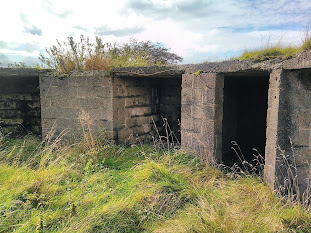





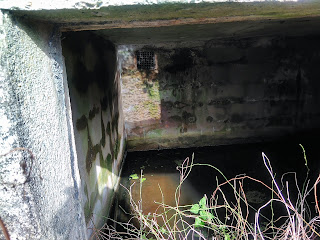


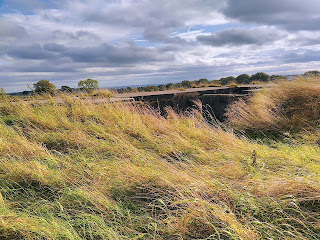

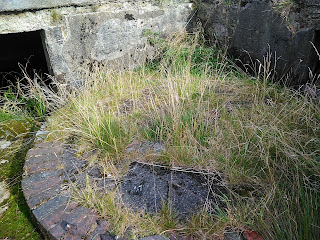
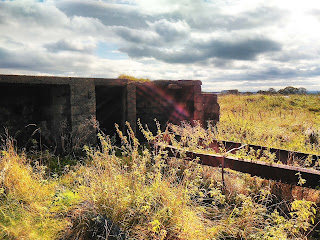
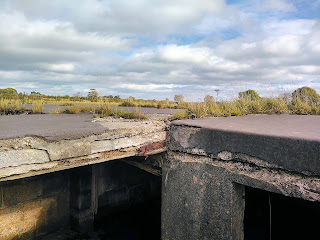




























No comments:
Post a Comment